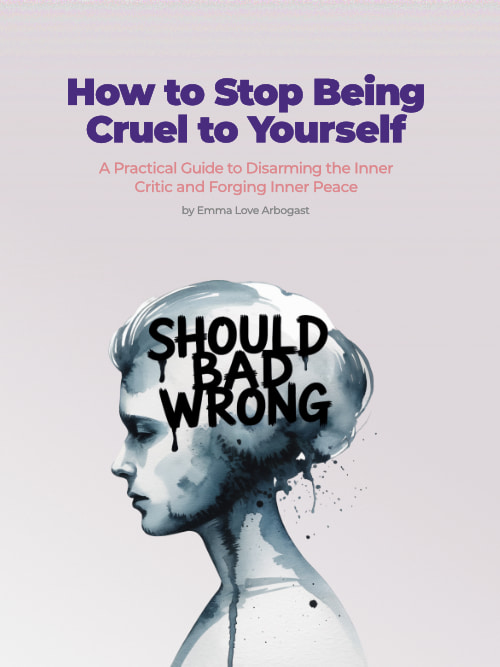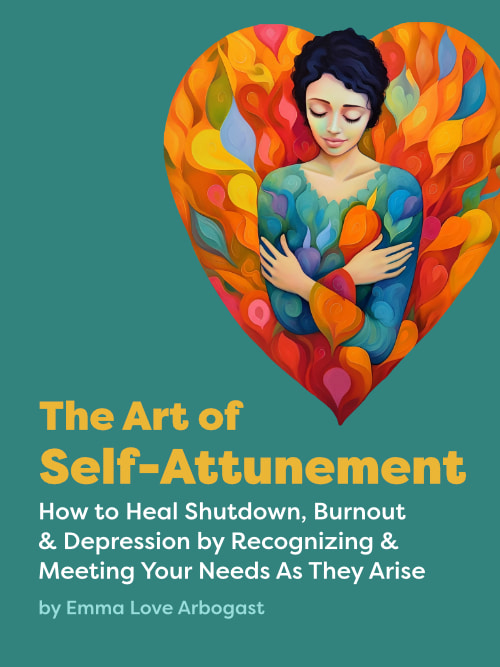Intro to State Shifting: Choosing to Be Happy Anyway
State shifting is the ability to change your mood or state of mind at will.
Your state of mind is the sum of your mood, feelings, thoughts, attitude, and perspective at any given moment.
The key thing about states is they are more than a feeling—they are all the ways your feelings influence your worldview and attitudes.
For example, bring to mind a time when you felt great and you also felt optimistic. Optimism and confidence and happiness all go well together—they form a great state of mind.
Just the same way, pessimism and self-criticism and feeling like crap go together. They form a state of mind closer to despair.
State-shifting is being able to shift out of a crappy-feeling state into a better-feeling state, on our own, without requiring an external change in our circumstances to occur first.
Think of it like shifting the gears of a car. Imagine there is a gear for “bad mood” and a gear for “good mood” and you could put your car into neutral (mindfulness) and then shift into a different mood.
Does that sound impossible? It’s not, but it is a skill that needs to be learned and practiced, and will be easier for some than others. If you are depressed, you may still need anti-depressants—this is not a substitute for medication. This isn’t a magic solution, it’s a skill and a mental technique.
If you do emotional state shifting for long enough (i.e. practice self-generating happiness), you will gradually build and reinforce your brain pathways and change your baseline emotional state to unconditional happiness. More details on how to do that over here.
OK, so just to be clear, let’s first talk about what state shifting is not.
State shifting is not suppression or compartmentalization.
One way to change your apparent mood is to suppress your feelings, which then build up over time until you can’t suppress them anymore. We all do this temporarily if say, we get bad news in the middle of a work meeting and pretend we are fine.
Another form of compartmentalization is when you carve out a positive-feeling part of your mind and try to just live in it. This can produce what people sometimes refer to as toxic positivity, where you dismiss, rationalize, or minimize your experience through positive affirmations, reframes, or denial of reality.
I don’t really like calling things “toxic” in general, because I believe every defense mechanism exists for a reason. I don’t find it useful to judge or condemn them. They are often a stepping stone to get to a more integrated resolution of pain. My goal would be to accurately understand it and then heal so I no longer need it. In other words, I think treating my symptoms with equanimity is the best approach when trying to transform them.
There’s nothing wrong with compartmentalization. It’s a fine coping strategy, and I’ve used it a lot in my life to get through hard circumstances. I’m not saying compartmentalization is bad and state-shifting is good. It’s just about understanding the difference:
- In compartmentalization, one part of your mind feels good, and another part is holding the upset, anger, depression, or despair.
- In state shifting, you release the upset and your whole mind shifts into a more joyful, free, happy state.
In compartmentalization, the negative feelings and thoughts are not really gone, and you are locating your awareness inside one part of a split mind. In state shifting, the negative thoughts and feelings are released, and you have access to your entire mind.
Compartmentalization can help you get through a hard day or month or even years of circumstances outside your control, but there is a constant drag on your energy to maintain the split in your mind.
With state shifting, there is a feeling of lightness and easiness because you’re not expending effort to maintain it.
Shifting your state is a learned skill, and it’s only instantly available after a lot of practice.
While I believe in learning and practicing state shifting, I am giving so many caveats because I think there are a lot of false promises out there. When you in despair, it’s completely understandable to want a quick fix. But for most people, this is a practice you become better at over time as you become more and more aware of what is really going on in your mind and what it means to hold on vs release things.
I think it’s important to have realistic goals. If you are struggling with an external situation that is overwhelmingly bad, and you just started trying to state shift, it’s going to be much easier to compartmentalize than genuinely shift. So expecting yourself to go from depression to joy is going to make compartmentalization more likely, because you aren’t currently able to genuinely shift that far on your own.
If this is where you are at, I would actually recommend learning to be honest with yourself about the compartmentalization that you are doing, and recognize it as a coping strategy and the best you can do right now. If you are honest with yourself about what it is and how you are using it, you won’t get stuck believing that it’s the same as truly shifting. Then you can continue to work slowly on shifting, while acknowledging that your mind is a work in progress (which is true of all of us!).
This distinction can be tricky; sometimes with our best efforts, we still end up pretending to ourselves instead of really shifting. This is a discernment process that gets clearer over time as we become more aware of what is going on in our mind.
There are beliefs that make state shifting easier or impossible.
State shifting rests on taking radical responsibility for one’s state of mind. Blame, resentment, judgement, and ideas of deserving can really get in the way of being able to shift.
For example, if you truly believe that you can only be happy if X person does Y thing, you are stuck. You are now entirely dependent on them to shift, rather than you shifting yourself. You have given up power over your own happiness.
State shifting depends on letting go of these kinds of mental habits of making others responsible for our feelings.
Beliefs that get in the way of state shifting:
- I can only be happy if X happens.
- I will be happy as soon as I accomplish Y.
- If I’m happy, that means the bad things that happened to me weren’t really that bad, so I’m letting victimizers off the hook and betraying myself by becoming happy.
- I can’t be happy because I’m permanently damaged or broken.
- I have no control over my thoughts and feelings; they are determined by external events.
- Being happy is selfish, embarrassing, childish, un-cool, self-indulgent, pretentious, weak, or fake.
- Being unhappy is more real, authentic, true, and honest.
Beliefs that support state shifting:
- I can choose and change my beliefs based on what works for me.
- My healing and happiness is entirely up to me.
- My mind is my own domain.
- I can change my mental habits over time.
- It’s my right to be happy no matter what my life is like.
- I refuse to let my past determine my future.
- Reclaiming my ability to be joyful and free proves I’m stronger than my abusers and they didn’t win.
- Happiness is my birthright and my natural state of being; I am not inventing anything, I am just letting go of what is in the way of it.
- I don’t care what anyone else thinks, I want to be happy and I’m going to be happy.
- Continuing to search outside myself for happiness is fruitless, as happiness is an inside job.
- I’m ready to take my happiness seriously.
- I have the ability to be happy right now, without anything needing to change.
There are many state-shifting techniques, but their efficacy depends on how you use them.
State-shifting techniques are ways of breaking through the normal habit-patterns our brain falls into.
There are many versions of state shifting that we are all aware of already, for example, taking a walk, taking a nap, meditating, etc. But how well these work depends on if you are able to actually release the apparent cause of your bad mood.
For example, if you take a walk, but spend the whole time reviewing all the reasons you are mad, that’s not going to shift your mood at all. The walk isn’t doing anything but giving you a supportive container by getting you out of your normal routine: it won’t shift your state by itself. Same with a nap: if you lay in bed fuming, finally fall into a fitful sleep, and then wake up still mad, it’s not that the nap didn’t “work”, it’s that you were not willing or ready to release your upset.
At this point, people might turn to more esoteric techniques, meditation regimens, etc. But I don’t think there is much point, because it’s not the technique that does it in the first place. Taking a walk is more than enough if you are ready and willing to shift; it will never help if you aren’t. Techniques are supportive, but they aren’t transformative.
The bottom line is that if you are putting your belief in a technique to shift your state, you are still not fully taking responsibility for your state in the first place.
OK, if it’s not all about techniques, then what is it about?
State shifting ultimately is an act of will. It is a choice you make to prioritize your own happiness over being right about whatever you believe is responsible for your unhappiness.
It’s taking back the power to be happy from whatever you invested it in.
This involves recognizing that our unhappiness is the proof we use to hold the world responsible for our feelings.
State shifting is giving up the need to prove that someone or something else is responsible for making us happy or unhappy, and choosing to be happy regardless of any external circumstance.
But self-responsibility is not self-blame.
This idea can be misused as a way to punish people who already feel terrible. If your mind is in a state where the choice is either to blame yourself or blame someone else, then it can sound like I’m saying that you’ll be happy if you just shift the blame to yourself. That is absolutely untrue. Blaming yourself is no closer to happiness than blaming someone else.
The difference between self-blame and self-responsibility lies in recognizing the true cause of our feelings. Detaching from blame and judgement is what actually removes the blocks to feeling good. Instead of believing that a wrong must be righted, or the blameful party must be punished for your feelings to change, you realize you can still be happy even while injustice exists in the world or in your past. You no longer need to be living proof that something is wrong in the world. You let yourself off the hook for that role.
In other words, state shifting is releasing yourself from bondage to bad feelings. You accept that while bad things happen, you do not have to continually feel bad about them.
While this sounds like a simple choice, it’s not an easy choice. It often involves grief, time, processing, and practice. It involves humility. It requires getting really, really, really honest with yourself and asking yourself hard questions like:
- Do I want to be _________ (angry, upset, righteous, hurt), or do I want to be happy?
- Do I want to prove them wrong or prove myself right, or do I want to be happy?
- Do I want to continue trying to change the world with my feelings, or accept I have the choice right now to be happy?
- Do I want to use the power I have to save myself, or continue waiting and hoping for a power outside me to save me?
- How long am I willing to wait or work to be happy, when I could be happy right now by releasing my grievances and changing my mind?
You may get to a point where you realize you don’t really want to be happy. Holding onto blame and anger is meaningful to you. I think this is a valid choice, and I would just encourage you to recognize what it might be costing you to hold onto it.
Sometimes we get so used to holding onto something that it feels comfortable and familiar, almost like we wouldn’t know who we would be without it. The question then becomes, do you want to find out? Do you want to know who you would be as a happier, lighter person? It’s truly up to you.
Self-love is a set of skills you can learn

Stop Being Cruel to Yourself
$2.99


Hey there, thanks for reading!
If you're new here, welcome to the Emmaverse! 🌈✨
About me: I'm autistic/ADHD and I write about how to be free and happy from the inside out.
I have guides to DIY healing including attachment & CPTSD, brain rewiring, self-validation, and recovering from neurodivergent burnout.
I've also got guides on using ChatGPT as your therapist and how to be permanently happy (really!).
And there's a whole mycelium network 🍄 of more projects you can check out:
- Sparkly Dark — my self-liberation process (Substack)
- Self-Liberation Society — neurodivergent community
- AstroLiberation — your natal chart as liberation map
- Joy Is My Path — practical spiritual insights
Keep in touch?
Self-Liberation Society


“State shifting ultimately is an act of will. It is a choice you make to prioritize your own happiness over being right about whatever you believe is responsible for your unhappiness.”
Wow, this is beautifully put. As I read this, I realised that prioritising happiness is such a radical choice in modern society. Don’t you think?
I also agreed with you that techniques can become obstacles to growth (if we let them). How many times have I meditated just to tick off my to-do list? Too many times. But as you say, sometimes going for a walk and really BEING there can be just as transformative.
Thanks for this nourishing read.
Hi Oliver,
Good to meet you! Absolutely agree that prioritizing happiness can be a radical choice. There were many points where my brain was telling me I had to be unhappy about something, and I realized I really didn’t. It’s a fine line because I don’t want to minimize real suffering, and being present with pain when you’re feeling it is important – but it’s equally important to let it go when the processing is complete, and let yourself feel joy and lightness. I feel there is often so much more joy inside people that they are not accessing, out of habit. So developing a habit of being happy, and reminding yourself you don’t need a reason to be happy, is a big part of healing to me. ?
So… what if there’s a part of me that doesn’t want to be a “happier, lighter” person, because one of my hangups is the intense need to be “taken seriously” and fear of being dismissed for seeming shallow? What if happy=shallow somewhere in my (admittedly screwed-up) mind, and I’m more afraid of looking shallow than of being perpetually sad? And, what if one of my mini-traumas was actually being verbally punished for expressing intense excitement and happiness as a kid? How do I change all that?
I had a similar thought process around “happy people are shallow”. I eventually reached a “fuck it” point where I realized I’d rather be happy, even if it made me more like someone I would have previously judged. In the end, I found out that being sad isn’t any deeper than being happy. Depth and happiness are independent variables. You can be vapidly sad or vapidly happy or deeply sad or deeply happy. So it’s just not accurate to associate depth with sadness. But to realize that, I had to let myself be happy and discover it for myself.
It comes down to, what do YOU want? Do you want your happiness to be decided by your past, or by you, in the present? You can work with any traumatized inner parts by talking to them with compassion, which can release the fear. But at the end of the day, you have to make the call yourself. It’s your own mood, your own life–nobody can tell you what to do with it. I do work with my traumas with parts work, but I always keep in mind that trauma is a *memory*, and I still have a choice in the present as to how I want to approach my life. In other words, in my inner world, the traumas are children and I’m the adult, I take care of them but I don’t let them make decisions for me.